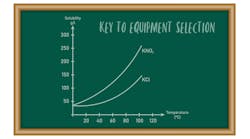Figure 5. Results show the effect of moisture on dynamic (BFE, SE and AE) and bulk (permeability) properties. Lactose. The very different behavior of the lactose is immediately obvious from the BFE data (Figure 5). The lactose shows a fall in BFE with increasing moisture levels, suggesting that here the presence of water actually may lubricate interparticular interactions. However, the specific energy (SE) data for lactose show the opposite effect: SE rising with increasing moisture content. This interesting behavior highlights an important, industrially relevant issue — namely, the processing environment strongly influences powder flow behavior. The BFE testing regime subjects the powder to a compacting action that is more representative of the forced-flow conditions that would apply, e.g., during extrusion or the pushing of powder into a partially filled die. In contrast, the upward motion of the blade during SE testing subjects the powder to a gentle, lifting action that produces values that reflect the unconfined flow behavior that would be observed when a powder pours freely from or into a vessel. As with the limestone, the presence of moisture very likely will produce liquid bridges that would tend to increase the cohesivity of the system. This fits with the observed trend in SE. However, the BFE data suggest that under forcing conditions this effect is more than offset by a competing lubricating mechanism that makes interparticular movement easier. Therefore, under compacting conditions the net impact of the moisture is beneficial. AE values also decrease with increasing moisture content, suggesting that here too, water reduces the strength of cohesive bonds.Evaluating bulk properties (Figure 5), the permeability data are perhaps most revealing. The steady rise in pressure drop observed indicates the powder becomes less permeable to the flow of air as moisture content increases. This supports the view that liquid bridges form within the system, inhibiting the passage of air. In contrast, both compressibility and bulk density (data not shown) change very little as a function of moisture content. The variation in bulk density (only 2 to 3 % across the experimental conditions) is particularly noteworthy because it suggests that in this instance bulk density/packing changes aren't responsible for the observed trends in flowability (as quantified by the dynamic test data). This indicates that powder testing methods based on bulk density could easily fail to detect the changes in behavior induced by moisture. Shear analysis is similarly insensitive for the lactose as for the limestone.
BETTER PROCESSINGThe effective management of humidity to ensure optimized processing relies on understanding and quantifying the effect of moisture in a way that's relevant to the process. Experimental data presented here for limestone and lactose illustrate the very different responses that moisture can induce and highlight the insight provided by multifaceted powder characterization, most especially incorporating dynamic measurement. The results demonstrate that even for materials that exhibit low moisture uptake, exposure to humidity levels typical of an industrial environment can significantly affect performance. Furthermore, they provide evidence dispelling the idea that moisture always degrades powder behavior. For example, under certain conditions moisture improves the flow properties of lactose, a result attributed to the lubrication of interparticular movement.As many processors already recognize, moisture's effects are neither linear nor predictable. So, it's essential to apply appropriate powder testing strategies to build a secure basis for intelligent decision-making around design and operation. Achieving the highest levels of manufacturing excellence and profitability requires keeping powders just dry enough to ensure optimal processing. Relevant powder testing provides the information needed to achieve this goal.
JAMIE CLAYTON is operations manager for Freeman Technology, Tewkesbury, U.K. E-mail him at [email protected].
REFERENCES
1. Jenike, A. W., "Storage and Flow of Solids," Bulletin of the Utah Engineering Experiment Station, 123 (November 1964, revised 1980).
2. Freeman R., "Measuring the Flow Properties of Consolidated, Conditioned and Aerated Powders — A Comparative Study Using a Powder Rheometer and a Rotational Shear Cell," Powder Technology, 174, pp. 25–33 (2007).









